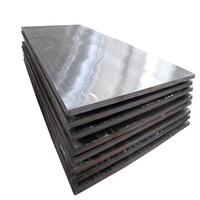1. Introduction
Just 24 hours ago, a major architectural firm in Chicago unveiled a new downtown office tower featuring a striking zinc clad roof and vertical standing seam metal siding—highlighting how metal clad design continues to dominate sustainable and modern construction. This surge isn’t just about looks; it’s driven by performance, longevity, and evolving building codes that favor resilient materials.

So, what exactly is metal clad? Whether you’re renovating a metal clad house, wiring a commercial space with metal clad electrical wire, or sourcing clad steel for industrial use, understanding the term—and its many forms—is essential.
2. What Does ‘Metal Clad’ Mean?
At its core, metal clad (or metalclad) refers to a composite material where one metal is bonded—mechanically, metallurgically, or through electroplating—to another for enhanced properties. The clad metal meaning centers on combining strengths: corrosion resistance, conductivity, strength, or cost-efficiency.
For example, aluminum clad stainless steel offers the light weight and affordability of aluminum with the durability of stainless steel. Similarly, copper nickel clad or titanium clad materials are used in aerospace and marine environments where extreme conditions demand high-performance alloys.
3. Common Types of Metal Clad Systems
Metal clad isn’t a single product—it’s a category spanning architecture, electrical work, and industrial manufacturing. Here are the most common applications:
- Metal clad buildings and sheds: Often feature exterior corrugated metal siding or colorbond standing seam panels for weather resistance.
- Metal clad walls and facades: Include corten steel facade, zinc facade, copper siding, and corrugated steel facade systems that age beautifully while protecting structures.
- Metal clad roofing: Options like pac clad standing seam roof, zinc clad roof, and vertical standing seam metal siding provide long-lasting, low-maintenance coverage.
- Electrical uses: Metal clad wire (including cu clad wire and aluminum clad wire) is armored for safety in commercial and industrial settings.
- Insulation and piping: Aluminum clad pipe insulation and metal clad insulation improve thermal efficiency while adding a protective outer layer.

4. Popular Clad Metals and Their Uses
The market offers a wide range of clad metals tailored to specific needs. Aluminum clad steel—also called aluminium clad steel—is widely used in automotive and construction for its balance of strength and weight. Stainless clad aluminum reverses the layers for different performance profiles.
In high-corrosion zones, alloy clad materials like 2024 T3 clad or 7075 T6 clad aluminum plates are standard in aviation. Meanwhile, industrial sectors rely on boiler plate steel, mild steel plate, or thick steel plate layered with chrome carbide overlay for wear resistance.
Architects increasingly specify corten steel plate for its rust-like appearance that stabilizes over time—though corten steel siding cost remains higher than alternatives like zinc metal siding or metal weatherboard.
5. Architectural Trends: From Facades to Roofing
Modern design leans heavily into expressive exteriors. A steel clad house might feature pac clad column covers and pac clad coping for clean lines. Dormers wrapped in zinc clad dormer panels add subtle elegance.
Standing seam facade systems—especially colorbond or pac clad hwp variants—are prized for their seamless look and water-shedding geometry. And with sustainability in focus, recyclable options like aluminum sheet for sale or stainless steel 316 sheet are gaining traction.

Even small details matter: brass plates for engraving, metal nameplates, and perforated plate accents often use clad techniques to blend aesthetics with function.
6. Industrial and Technical Applications
Beyond buildings, metal clad components are vital in engineering. Metal clad electrical wire meets strict fire and impact codes in Pennsylvania and other states. Aluminum clad steel wire reinforces cables without sacrificing flexibility.
In manufacturing, processes like chromium electroplating, electroless nickel, and gold coating create specialized surfaces on base metals like brass plate, nickel plates, or titanium plate.
Sheet and plate suppliers offer everything from 1/8 inch steel plate to 3/16 metal plate in grades like 316L stainless steel plate or 6061 T6 aluminum plate—many available as clad versions for hybrid performance.
7. Cost, Availability, and Sourcing
Prices vary widely based on material and thickness. For instance, corten siding cost can be double that of standard corrugated steel, but its longevity offsets initial expense. Similarly, stainless steel plate price depends on grade—316 vs. 304L, for example.
Buyers often search for ‘steel plate near me’ or ‘aluminium checker plate near me’ to find local distributors. Online, terms like ‘aluminum diamond tread plate for sale’ or ‘stainless steel checker plate’ yield specialized vendors catering to both DIYers and contractors.
8. Conclusion
Metal clad is far more than a buzzword—it’s a versatile, high-performance approach used everywhere from your metal clad shed to skyscraper facades. Whether you’re choosing a corten steel siding for its raw beauty, installing metal clad cable for safety, or specifying aluminum clad sheet for lightweight strength, understanding the options ensures smarter, longer-lasting decisions. As materials science advances and sustainability drives design, expect metal clad solutions to keep evolving—and appearing—in even more surprising places.
Our Website founded on October 17, 2012, is a high-tech enterprise committed to the research and development, production, processing, sales and technical services of ceramic relative materials such as What. Our products includes but not limited to Boron Carbide Ceramic Products, Boron Nitride Ceramic Products, Silicon Carbide Ceramic Products, Silicon Nitride Ceramic Products, Zirconium Dioxide Ceramic Products, etc. If you are interested, please feel free to contact us.
